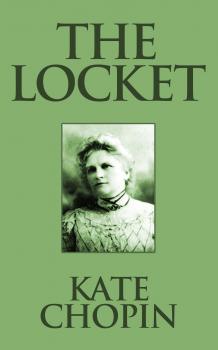Ingram
Все книги издательства IngramMansfield Park
The backbone of Mansfield Park is based around the marriages of sisters Lady Bertram, Mrs. Norris, and Mrs. Price. Each of these sisters marries a man from a different social class. Lady Bertram marries an extremely wealthy baronet Sir Thomas Bertram; Mrs. Norris marries a clergyman that makes a decent living; and Mrs. Price marries a naval lieutenant, who is injured shortly after they marry causing his career to end with living in poverty. This tale revolves around Fanny Price, who lives in poverty until being sent to live with her wealthy Aunt Bertram. While received warmly at first, what unfolds is a life of cold neglect and further trouble in her new lifestyle.
Invisible Man, The The
One night a stranger wrapped in bandages and eccentric clothing arrives in an English village. That stranger, Griffin, is a brilliant and obsessed scientist who has discovered how to turn his entire body invisible. Although he initially feels joy at his newfound freedom and abilities, that joy quickly turns to despair when he struggles to discover a way to reverse the process. As Griffin gradually loses his sanity, his initial, almost-comedic adventures as an invisible man become overshadowed by a streak of more terrifying acts…First published in 1897, The Invisible Man ranks as one of the most famous scientific fantasies ever written. Part of a series of pseudoscientific romances written by Wells early in his career, the novel helped establish the British author as one of the first and best writers of science fiction, and it continues to enthrall science-fiction fans today as much as it did its first readers nearly one hundred years ago.
Northanger Abbey
The story's heroine, seventeen year old Catherine Morland, is invited by her neighbours, the Allens, to accompany them to visit Bath for a number of weeks. While, initially, the excitement of experiencing such a place was dampened by her lack of other acquaintances, she is soon introduced to an intriguing young gentleman named Henry Tilney, though her attention was quickly taken upon meeting a young lady named Isabella Thorpe. Isabella tries to make a match between Catherine and her brother John. John Thorpe continually tries to sabotage her relationship with the Tilneys, which leads to many misunderstandings.
Dubliners
These vivid, tightly focused observations about the life of Dublin's poorer classes originally made publishers uneasy: the stories contain unconventional themes and coarse language, and they mention actual people and places. Today, however, the stories are admired. They are considered to be masterful representations of Dublin done with economy and grace-representations, as Joyce himself once explained, of a chapter in the moral history of Ireland that give the Irish a good look at themselves. Although written for the Irish specifically, these stories-from the opening tale The Sisters to the final masterpiece The Dead-focus on moments of revelation that are common to all people.
Portrait of the Artist as a Young Man, A A
First published in 1916, James Joyce’s “A Portrait of the Artist as a Young Man” is his first novel. A Künstlerroman, or “artist’s novel” it describes the life of Steven Dedalus from childbirth, through his schooling and finally to his full blossoming as an artist. Loosely based on the author’s life and ritten in a mix of third person and indirect speech, the novel served as a basis for Joyce’s more experimental novels “Ulysses” (1922) and Finnegan’s Wake (1939).
Death of Ivan Ilyich, The The
Hailed as one of the world's supreme masterpieces on the subject of death and dying, The Death of Ivan Ilyich is the story of a worldly careerist, a high court judge who has never given the inevitability of his death so much as a passing thought. But one day death announces itself to him, and to his shocked surprise he is brought face to face with his own mortality. How, Tolstoy asks, does an unreflective man confront his one and only moment of truth? A thoroughly absorbing and, at times, terrifying glimpse into the abyss of death, it is also a strong testament to the possibility of finding spiritual salvation.
My Antonia
After the death of his parents, Jim was sent to live with his grandparents in Black Hawk Nebraska. There he befriended Antonia, the daughter of Bohemian immigrants. Years later, Jim, now a successful lawyer in New York, returns to his childhood home and Antonia. Jim's love for Antonia has endured, much as she herself has endured tragic circumstances.
Reflection, A A
Kate Chopin’s “A Reflection” is a reflection on the fortunes of life. It is a meditation on how some people succeed by harnessing their energy effectively while others get left behind.
Locket, The The
In “The Locket”, a confederate soldier declines his fellow soldiers’ request to reveal the contents of the locket around his neck. The locket, which holds pictures of his fiancée’s parents and the date of their wedding is found on the battlefield after a battle. Later, the soldier’s fiancée visits the battlefield with the soldier’s father, both shaken with grief. The soldier’s father asks his son’s fiancée to remove her veil, as it contrasts too sharply with the beautiful day and adds that on such a day miracles seem ready to happen. Returning home, something extraordinary happens to make her believe he may be right.
Pair of Silk Stockings, A A
In «A Pair of Silk Stockings», Mrs. Sommers, a once wealthy woman who has fallen on hard times comes into possession of a small fortune of $15. Planning to spend the money on clothing for her children, she becomes sidetracked at a shop counter, entranced by the smoothness of a pair of silk stockings. She goes on to spend the money on the stockings as well as new boots and gloves for herself. In succumbing to “mechanical impulses that direct her action”, Mrs. Sommers resembles Edna Pontellier, the heroine of Kate Chopin’s later masterpiece The Awakening. First published in Vogue in 1897.









